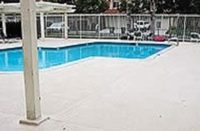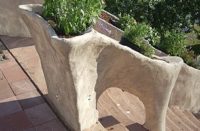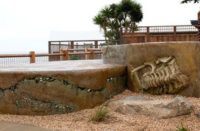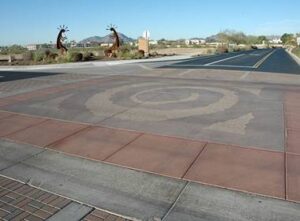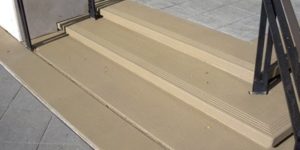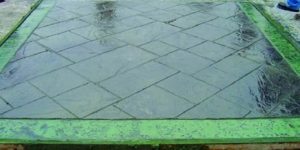Designed as an easier-to-use, more controllable color system, Construcolor B01 integral pigment is a liquid gel that has been winning over skeptics for the last decade.
“I remember when we first introduced it in the United States, people kind of had difficulty with the idea because they’d never seen (integral pigment) in a liquid form. As soon as they started using it, they liked it,” says Adrian Jimenez, sales manager for Construcolor USA Ltd.
B01 was originally introduced in Mexico in the mid-1990s, then came to Texas in the late 1990s. Brad Adcock, owner of San Antonio-based Commercial Concrete Inc., has been using it ever since. Both he and Jimenez agree there are two key advantages to using the gel pigment.
First is the ease of mixing. The gel can either be added to the concrete mix water before mixing, or it can be put directly into the concrete itself during the mixing process. Contractors no longer have to fight off clumps of pigment when blending or need to add water to the concrete to counteract large amounts of powder.
Secondly, B01 is a system that is simple but offers a lot of possibilities. While only 14 basic colors are available, a contractor can achieve 56 different shades by using smaller or larger amounts of B01. “How much color you mix in will determine how dark (the color) is going to be,” Jimenez says. “One gallon of red would be pink, while four gallons would produce a very intense red.”
Both of these advantages have been beneficial for Adcock and his company, especially on commercial jobs.
“The disadvantage to powder is that when you throw in 150 pounds of powder, you have to add back in a lot of water to get the concrete mix back to its original state. That can create an issue with the specifier,” he says. “When you add the liquid colorant you don’t have that problem. It stays just as wet, and you don’t have to convince somebody why you needed to add more water.”
Construcolor B01 can be used anywhere a cementitious mixture requires integral coloring, including in creating precast concrete pieces, tilt-up panels, patios and retaining walls. It can also be used to color mortar-joint grout when installing ceramic tiles, brick and masonry.
The colorant can be used in both interior and exterior applications, as it is UV-resistant. “There’s no way to get around a little bit of fading or efflorescence, but it doesn’t have near the fading (as other pigments). It doesn’t end up that far off from the color chart. A red is still going to look red,” Adcock says.
Adcock is such a proponent of the gel pigment that it’s been his go-to colorant for the last decade.
“We’ve probably poured 4 to 5 million square feet with B01,” he says.
www.construcolor.com
